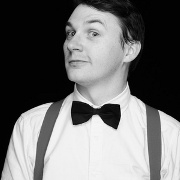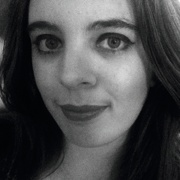Big question: what’s the best way to design and build for interaction?
It’s not all about social sharing buttons and comment forms. Our expert panel members discuss the best ways to encourage user interaction through design

Rob Mills
Studio manager
www.bluegg.co.uk
Engagement can only be considered when you understand your audience. Every decision needs to be made with them in mind. Informed choices must be made for colours, typefaces, call to actions, tone of voice, microcopy, branding, structure and imagery. Combined, these will tell an engaging story to the target audience.
Rob is studio manager of creative agency Bluegg

Sarah Richards
Content design lead
www.gov.uk
Get to the point. And quickly. The basics: humans look for words they are thinking of so write in their language. Write for the brain and eyes by using headings and easily digestible chunks of information. Make it easy; if there is a call to action, make is obvious.
Avoid jargon-laden sentences. Write clearly and how humans read. If you respect your users, your users are more likely to be happy with (and engage with) your content.
Sarah is content design lead for GOV.UK

Ross Bruniges
Developer
www.thecssdiv.co.uk
Provide a sense of ownership of your service or product. We’ve found most users like to think that the service or product is cool and is something they’re helping grow.
Lots of things on the web nowadays make it really easy for users to put content in but don't provide half as good a service for letting users get their stuff out or tie it to their online identity.
My advice would be to create tools that allow people to make great content for you, but also allow them the ability to show that what they make with your product is really theirs.
Ross is a web developer

Luke Murphy-Wearmouth
Designer
www.lurkmoophy.com
Aside from the obvious point of having amazing content, a lot of it comes down to two simple things: a site with content as its main feature needs to allow content to be the main focus point on the page. If a masthead, shiny advertisement or related story is competing for attention, then there's the chance it'll win.
Second, making sure you adhere to simple rules with type and layout (such as making sure your font size is big enough to read, paragraphs aren't too wide and the line-spacing doesn't cause reader fatigue) lets the reader focus solely on the quality of the content.
Luke is a freelance designer

Chip Hayner
CIO
www.lifeasachip.com
Shorter is better.
Chip is chief information officer at CentreSource

Aral Balkan
Experience designer
aralbalkan.com
If you’re working on something you’re excited about, your enthusiasm will be contagious and you won’t need to resort to the sort of marketing bullshit that we can spot a mile off. If you’re authentic, you will polarise people and that’s OK. If you respect the time and effort of your readers and users then you will naturally be succinct and layer your article properly.
As Blaise Pascal famously stated: ‘I have only made this letter rather long because I have not had time to make it shorter.’
Aral is a designer and developer as well as a professional speaker

Gavin Elliott
Designer
www.gavinelliott.co.uk
If engagement is classed as having people stay on your site for a longer time, then you're looking to provide content that visitors want to read. This can mostly be done with testing, creating different types of content and then tracking what the engagement is like with types of particular content.
Gavin is founder of the Industry Web Conference
Daily design news, reviews, how-tos and more, as picked by the editors.

Rachel Shillcock
Designer
www.rachil.li
It's not all down to social sharing buttons or comment forms. It comes down to experiences. If you think about good experiences you've had with companies or interactions in real life, you want that feeling to be translated to the work you do on the web.
Users will be happier if they feel you’ve gone the extra mile to make their experience using your website better - even if they don't consciously know it. Look at all the smaller and finer details, from the content that you use on a button to the imagery and interactions (such as animation and video) that you can use to enhance the way that a user can navigate around a site.
Rachel is a freelance web designer

Trent Walton
Founder
www.paravelinc.com
Websites and articles operate under the assumption that a page view commands someone’s full attention and that the user intends to engage with the page. In reality, that page is probably opened alongside multiple tabs, is being scrolled to see how long the article is, and is closed if it takes to long to load. We call them web browsers for good reason.
Maybe before we start adding layers of enhancement and immersion, we edit, reduce, and refine what we have. If users jump ship on a page with tiny 12px type surrounded by animated banner ads, sensationalist flat belly links, and fixed-positioned social sharing widgets, can we really blame them? In my mind they’re just doing what the design told them to do: leave, because all this crufty noise linking elsewhere is the most engaging thing on the page anyways.
Trent is one third of Paravel

Jonathan Smiley
Designer
www.zurb.com
The key to designing engagement is to remember that benefits, not functions, rule people's actions. Tweets, URLs, comment fields, registrations, maps of where other visitors are, Likes: these are too often included because they fill the space, or they have some nebulous potential value.
People engage with real value, and that means functions that have a clear benefit to the user. Why share? Why comment? Answer that and people will engage.
Jonathan is design lead at ZURB

Cole Henley
Web developer
www.tinyv.com
For me engaging design has to make content primary. By all means design around content and design for content but never give it a supporting role.
Cole is a freelance frontend developer and designer

Shane Mielke
Creative director
www.shanemielke.com
Remove any unnecessary internal/external links, distractions or buttons that would navigate a user away from the content on the page.
The less distracted users are, the longer they stay on the page. Another strategy is to actually distract and engage the user by animating eye catching graphics as a user scrolls, or integrating interactive modules into the content.
Finally, the most important key to engagement is to actually have the content or product information that the user was looking for in the first place.
Shane is a freelance designer and creative director

Andy Smith
Project manager
www.readingroom.com
The best place to start is by actually talking to your users. It’s a common misconception that you can have a more engaging site if you simply add a comment form and some social sharing buttons to every page of you site. It’s very easy to do and it does tick the ‘social box’. But you need to think about how appropriate that is for your audience. Think: is that what users need from my website?
Depending on the type of site, engagement is likely to mean achieving a conversion from casual visitor to paying customer. In which case, start with your analytics. Focus on where people get stuck and evaluate it. Ask yourself how you can do it better.
Even the simplest tweak, like a change of wording on a form, can increase conversion. Most importantly, A/B test everything to ensure you have all the facts before making any changes.
Andy is project manager at Reading Room
Discover 20 artful and inspiring approaches to website navigation at Creative Bloq.

The Creative Bloq team is made up of a group of art and design enthusiasts, and has changed and evolved since Creative Bloq began back in 2012. The current website team consists of eight full-time members of staff: Editor Georgia Coggan, Deputy Editor Rosie Hilder, Ecommerce Editor Beren Neale, Senior News Editor Daniel Piper, Editor, Digital Art and 3D Ian Dean, Tech Reviews Editor Erlingur Einarsson, Ecommerce Writer Beth Nicholls and Staff Writer Natalie Fear, as well as a roster of freelancers from around the world. The ImagineFX magazine team also pitch in, ensuring that content from leading digital art publication ImagineFX is represented on Creative Bloq.
